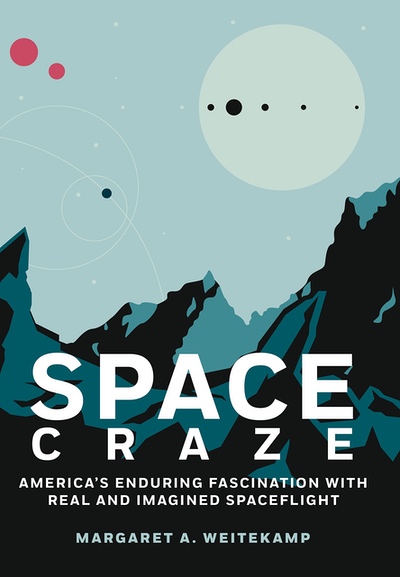Review: Space Crazeby Jeff Foust
|
| “Stories of space adventurers riding rocket-propelled vehicles into the space frontier became so accepted that no one questioned the various elements of these tales or why those elements fit together.” |
It also created the first merchandising tie-ins. Daisy Manufacturing produced a metal toy pop gun modeled on the ray guns featured in the Buck Rogers comics, which became a massive hit, leading to a whole line of similar products for years. Such pistols seemed an odd choice for space dramas, Weitekamp argues: hazardous in the cramped confines of a spaceship and useless in the vast expanses of space. “Rather, rocket pistols or ray guns evoked the archetype of the Western hero and his connection to a particular theory of American national identity forged in frontier experience.” It was something that would become a staple of sci-fi for many decades to come.
Weitekamp continues that exploration of spaceflight history and culture through the decades that followed, often tied to artifacts in the museum’s collection, from a ’50s era play set to a cookie jar designed to look like a Mercury capsule to a model of the Rocinante, the ship from The Expanse. (One item missing from the museum’s collection, she notes, is a space-themed Cabbage Patch Kid doll, either the one that flew in space that went missing or one given to President Reagan, which apparently was donated to charity. “Somewhere in 1985, a child who got a sought-after Young Astronaut Cabbage Patch Kid from a toy drive unknowingly got the very doll that had been presented to the president.”) The book, though, goes beyond those artifacts to other aspects of the interplay of spaceflight and society, such as the creation of organizations to lobby for spaceflight and changes in the media landscape.
So what does all of this art and artifacts tell us about society’s interest in spaceflight? “The persistence of America’s investment in the kinds of stories told about spaceflight hints at deep-seated issues that we still struggle with as a nation,” she concludes, such as race and gender. And yet, “popular excitement about spaceflight, both real and imagined, persisted in American culture precisely because the cultural forms adjusted in reaction to changing circumstances.” The book expertly tracks those changes in society and our interest in spaceflight, reflected not just in vehicles that fly to space but the replicas of them enjoyed by people on Earth.
Note: we are using a new commenting system, which may require you to create a new account.
